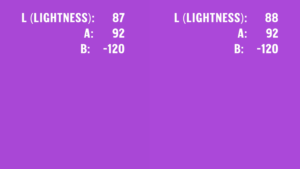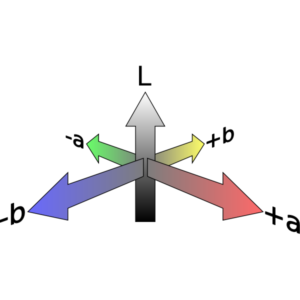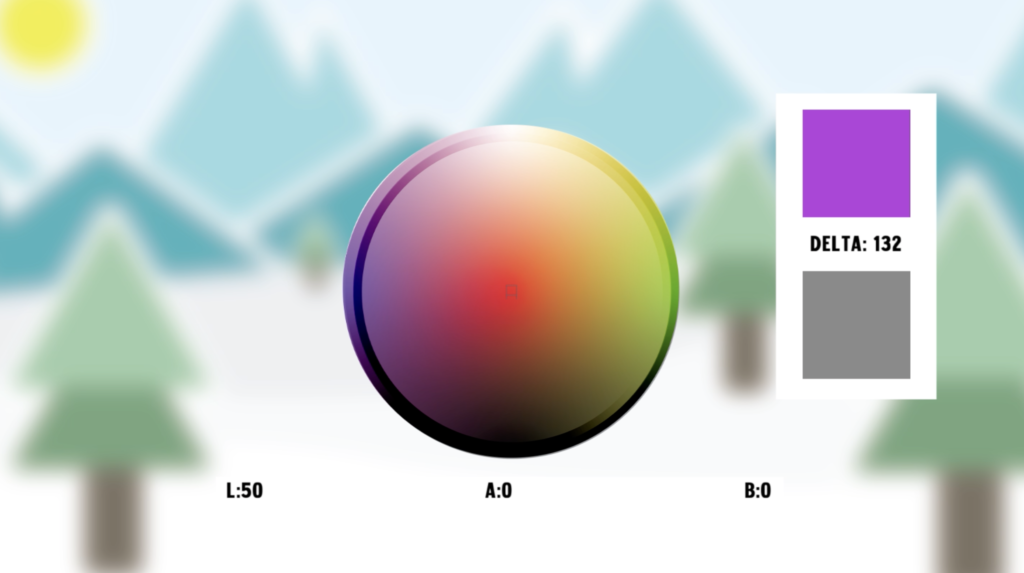LAB Color Space and Color Matching

Why Is It Hard To Match Colors?
There are a lot of challenges that we get to overcome in the printing industry. One of those challenges is color matching. This can be difficult because everyone sees colors differently. Even just the color red is described in multiple ways by different people. For example, there is apple red, fire engine red, or crimson. This is why it is important to have an exact color matching system, such as the LAB Color Space so that when we receive your artwork, we can match it as closely as we can to your original design.
 What is the LAB Color Space?
What is the LAB Color Space?
The LAB color space is the largest and most common color space for measuring object colors. It encompasses our entire visual color spectrum. Scientists from the 1930s sought a way to take our visual color spectrum and broke it down into numbers so that these numbers are plottable on a graph and easily replicated later. This was a monumental development!
Now that every color has its own number, it is easier to replicate between devices. These numbers are mapped into values corresponding to the L, A, and B axes, creating a spherical shape. The L represents the lightness scale, A represents red to green, and B represents yellow to blue. This system makes it a lot easier to accurately match colors between objects, and digital files.
The LAB Color Space as a GPS Coordinates
We use the LAB Color space to help us better match between objects, and files, such as the digital artwork you send us, and the stickers and labels we print. The numbers we gather when scanning an object using a spectrophotometer act almost like GPS coordinates on a globe. When we scan that object, such as a shampoo bottle, the numbers for each coordinate show up as a specific destination that we need to hit as close as possible with our printers.
As technology develops, we gain a closer understanding as well as better accuracy when it comes to matching colors to what we see. For now, devices are limited to their gamut or output of color. You can learn more about those here.
Color Matching is like Archery
Color matching when using the LAB color space is like archery.
The bullseye in the center is the color we aim to match. The further away from the center of the target, the further away from the desired color we are, just like counting points in archery. Using his top-of-the-line bow, Marty is able to hit the center ring every time. Although he doesn’t hit directly in the center of the bullseye, he still gets the ten points. Using our top-of-the-line printers, and the LAB color space, we have the ability to hit in the center ring every time.
Color Matching and Delta Values
The printing industry has a standard value for how far off we are able to be from the desired color’s coordinates, without it actually looking different to the naked eye. They call this a Delta Value. Delta Value is the sum of the distance between all 3 coordinates from the desired color’s origins. The closer the Delta Value is to 0, the better. Getting close to 0 can be very challenging! However, the industry allows a Delta Value of up to 2 in order to keep the color as accurate as possible.

This is how we color match using the LAB color space. With this broad range of colors, we can get as close as possible to the color that you need. It also makes it easier to match the same color across a variety of printers that use this same model. If you need to print business cards, brochures, or other printed material, when you have the LAB values, it makes it much easier to maintain the same brand colors throughout.
The Sticker Mountain Promise
Though color matching can be difficult for anybody in the industry, here at Sticker Mountain, we pride ourselves in our ability to go the extra mile and ensure your colors match as closely as possible with every run. It’s more than just making stickers and labels, it’s helping your business grow, and creating a partnership that lasts a lifetime.
 What is the LAB Color Space?
What is the LAB Color Space?


